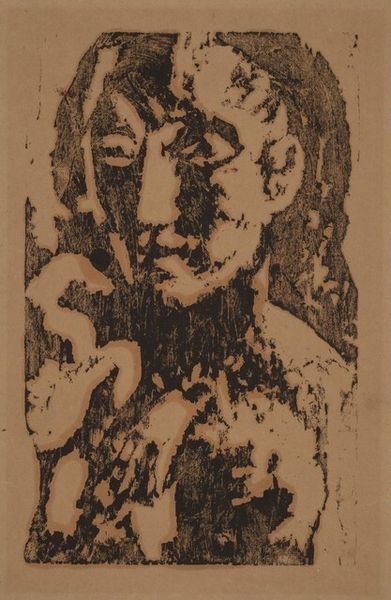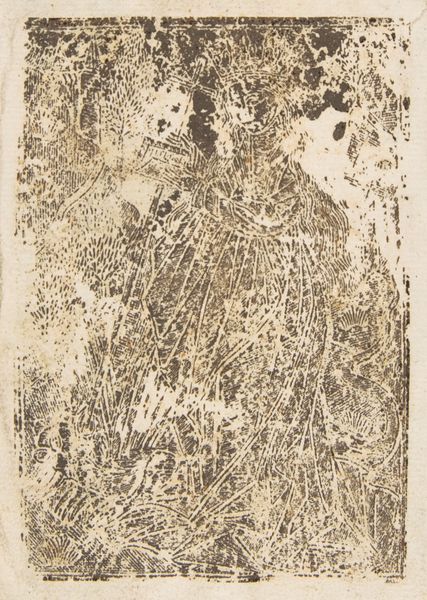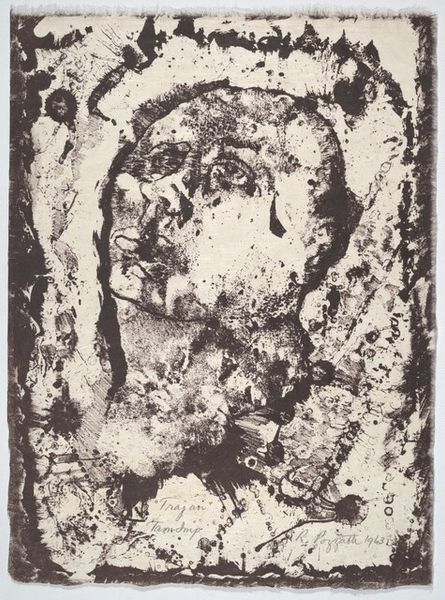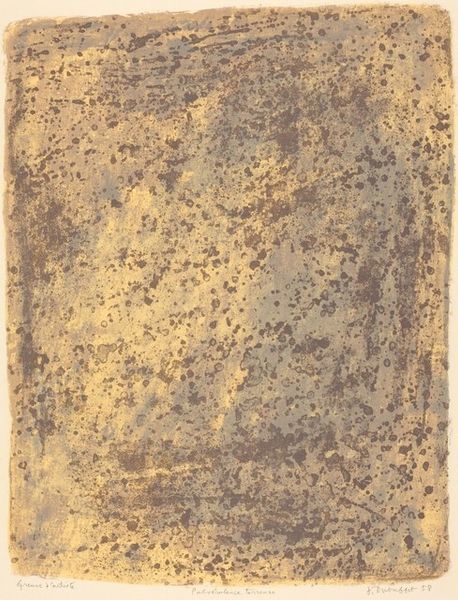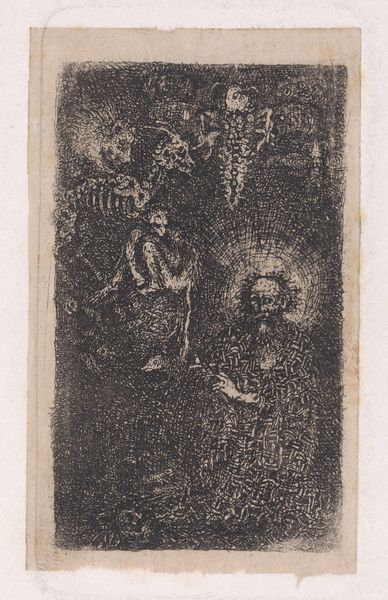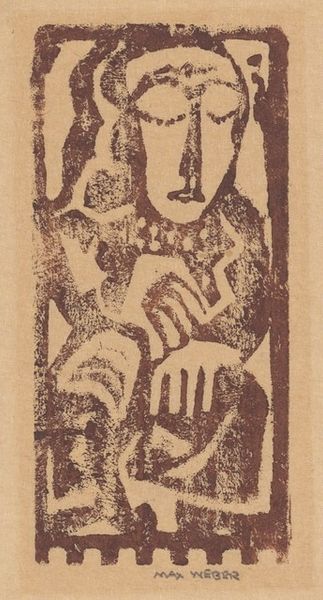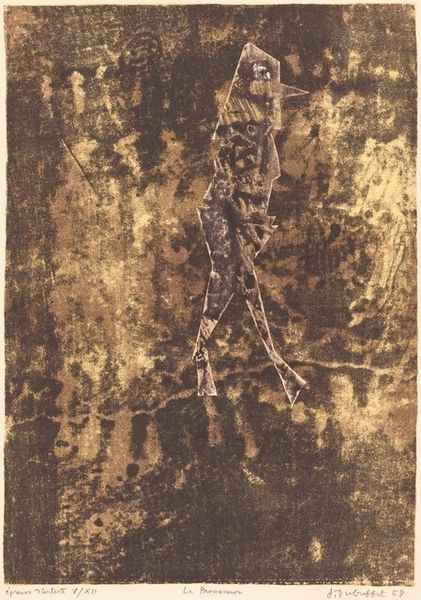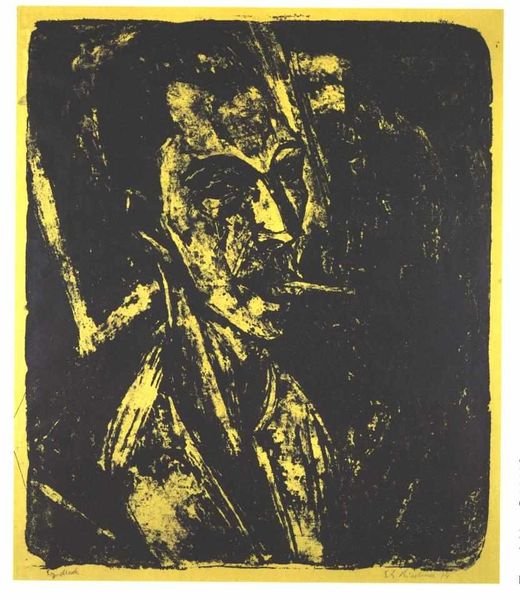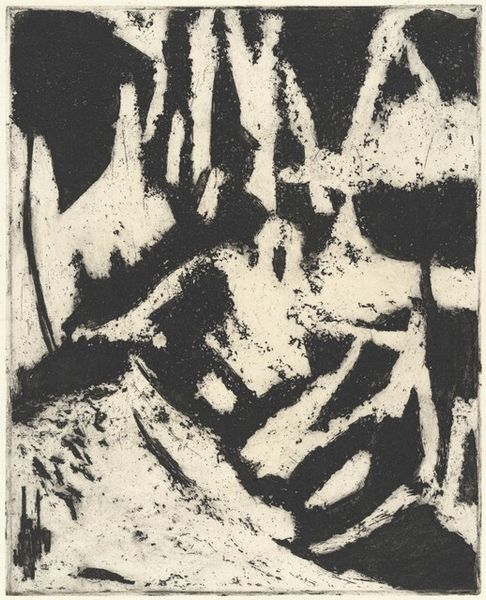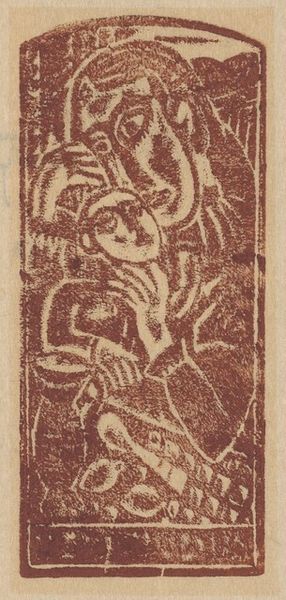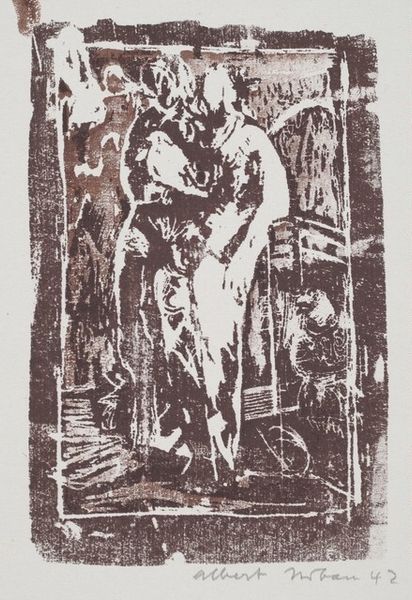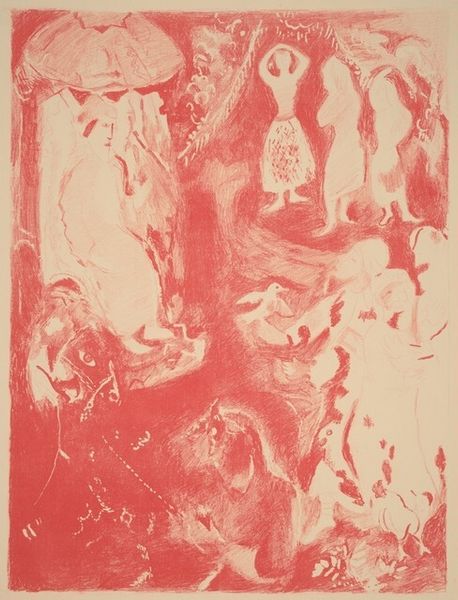
graphic-art, print, paper, woodcut
#
portrait
#
graphic-art
# print
#
figuration
#
paper
#
geometric
#
woodcut
#
modernism
Dimensions: image: 10.8 x 4.8 cm (4 1/4 x 1 7/8 in.) sheet: 17.2 x 7.6 cm (6 3/4 x 3 in.)
Copyright: National Gallery of Art: CC0 1.0
Editor: We’re looking at Max Weber’s "Standing Figure" from 1954, a woodcut print on paper. It has a sort of primitive, blocky quality that I find really striking. What strikes you about it? Curator: The primitive quality you've noted really speaks to the modernist pursuit of authentic, unmediated expression. Weber, alongside other artists of his time, was deeply interested in challenging the conventions of academic art. This piece reflects the increasing value society placed on work created outside of traditional art academies and schools, doesn't it? Editor: I see what you mean. It's like it's trying to access something raw and universal. But how does its presentation in galleries impact that goal? Curator: Ah, that's a critical question! Think about how museums and galleries, as institutions, often 'sanitize' or re-contextualize works like this. They present it as “high art”, shifting it away from that original raw context. It gets framed, literally and figuratively, by institutional authority, doesn’t it? How do you think Weber would view its placement in this setting? Editor: That's a tough one. Maybe he'd see it as a necessary compromise, reaching a wider audience but losing some of its initial impact. I’m really struck by the tension of appreciating 'primitive' art in very elite, powerful environments. Curator: Precisely! And considering that the mid-20th century saw rising interest in ethnographic collections and so-called primitive arts, where do you see that fitting into the public’s response and interpretation? Editor: It's as if "primitivism" was adopted as a tool, almost. Now, seeing all the influences behind the work is fascinating and very compelling! Curator: Agreed! Examining its context changes everything.
Comments
No comments
Be the first to comment and join the conversation on the ultimate creative platform.
